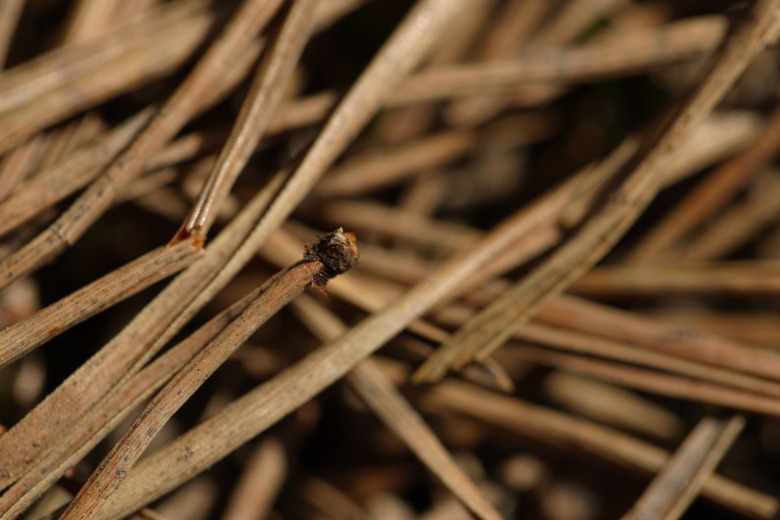Why Is My Weeping Pine Turning Brown With Very Little Green?
Weeping pine trees, often combined with regular forms of pine in landscaping, provide an exotic accent in a garden. The elegant pines have cascading, evergreen branches that can grow to touch the ground if left unpruned. Weeping pines are available in several cultivars, such as Angel Falls white pine, weeping Japanese red pine and Uncle Fogy weeping pine. The needles of weeping pine may turn brown, leaving very little green, for a number of reasons.
Seasonal Browning
The most common cause of needles turning brown on a weeping pine is winter browning. Unlike deciduous trees, which go dormant once their leaves fall, pine trees are evergreen and require water in the winter months for photosynthesis, the process of turning sunlight into energy. If weeping pines do not receive enough water to last through the winter for this process, their needles may turn brown as they dry out. Seasonal browning generally does not become obvious until late winter or early spring, although other factors, such as extremely cold temperatures, may accelerate the process.
- Weeping pine trees, often combined with regular forms of pine in landscaping, provide an exotic accent in a garden.
- If weeping pines do not receive enough water to last through the winter for this process, their needles may turn brown as they dry out.
Other Causes
Other reasons weeping pines may turn brown are exposure to road salts, transplant shock and improper planting, such as planting in soil that is not well drained. Some diseases may cause browning of needles in pine, including needle cast (Ploioderma lethale), needle blight (Bifusella linearis) and brown spot needle blight (Mycosphaerella dearnessii). Insect infestations, particularly bark beetle, may cause the needles of the weeping pine to turn brown.
Diagnosing
A diagnosis is often needed to determine the care required for weeping pines that have browning needles. While cultural care is all that is necessary in the case of seasonal browning, the presence of diseases or insects may require specific control. Your local county extension office will be able to help you with this. Contact them to inquire about sending a sample of the needles to them for diagnosis.
- Other reasons weeping pines may turn brown are exposure to road salts, transplant shock and improper planting, such as planting in soil that is not well drained.
Care
For seasonal browning, Iowa State University recommends watering the weeping pine deeply in the fall just before the ground freezes. Preventing drought stress in the late summer will also help minimize winter browning. Do not prune off branches that have brown needles as they may still have viable buds. If new growth does not show in the spring, then the branch should be removed. Diseases and insect infestations may require fungicides or pesticides; consult your local county extension office for advice.
